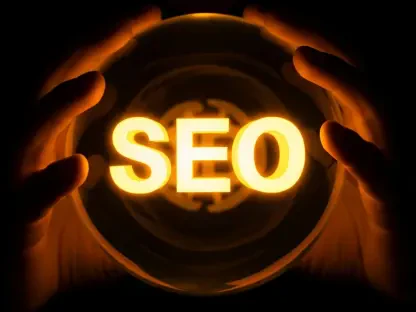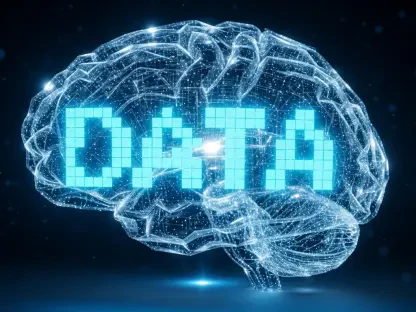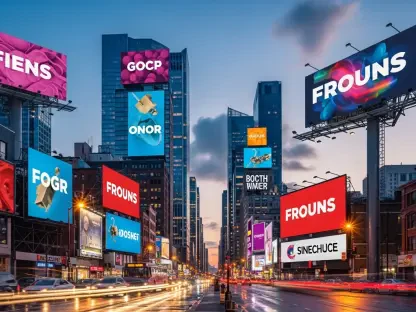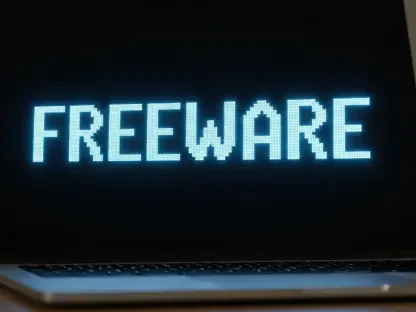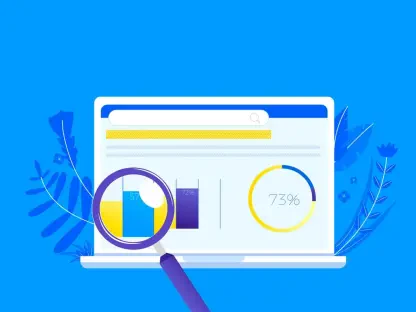Setting the Stage for a Media Revolution
Imagine a platform so pervasive that it captures the attention of over 2.7 billion users worldwide, outpacing even the most storied entertainment giants in viewership and influence. This is the reality of YouTube, a digital juggernaut that has transformed from a simple video-sharing site into a cornerstone of modern media consumption. As the platform marks two decades of existence, its dominance in the U.S. media industry signals a profound shift, challenging traditional powerhouses and redefining how content is created and consumed. With artificial intelligence (AI) at the forefront of its strategy, YouTube is not just adapting to change but actively shaping the future of entertainment.
The current state of the media industry reflects a seismic transition toward digital platforms, with YouTube leading the charge. Its ability to engage a new generation of viewers through user-generated content and cutting-edge technology has positioned it as a cultural and economic force. This report delves into how YouTube has achieved market supremacy, the role of AI in its growth, the challenges it faces, and its vision for the next era of media.
The Rise of YouTube: A Media Powerhouse at 20 Years
YouTube’s journey from a modest startup to a titan of the media landscape showcases a remarkable evolution. Initially a haven for amateur videos, the platform has grown into a cultural phenomenon under the stewardship of Google and its parent company, Alphabet. Today, it stands as a central hub for entertainment, education, and social discourse, influencing trends and behaviors across the globe.
With a staggering user base of 2.7 billion, YouTube has become the most popular platform for watching TV in the U.S., surpassing traditional media outlets in both reach and engagement. This vast audience reflects the platform’s ability to cater to diverse interests, from short-form clips to long-form documentaries, making it a daily staple for millions.
When compared to legacy giants like Disney, YouTube’s lead is striking. Its viewership and revenue metrics overshadow even the most established players, highlighting a shift in how audiences prioritize digital content over conventional formats. This transformation underscores YouTube’s commercial significance and its role as a trailblazer in redefining media consumption for the modern age.
YouTube’s Market Dominance and Growth Trajectory
Current Trends in Media Consumption
The media landscape is undergoing a dramatic pivot, with digital platforms increasingly overshadowing traditional entertainment conglomerates. YouTube sits at the heart of this shift, capitalizing on changing viewer preferences that favor on-demand, personalized content over scheduled programming. This trend marks a departure from the dominance of cable networks and studio-driven narratives.
A key driver of this change is the rise of user-generated and personality-driven content, exemplified by creators like Dua Lipa and Mark Rober. These individuals, with millions of subscribers, resonate deeply with younger audiences, offering authenticity and relatability that often outshine Hollywood’s polished productions. Their influence signals a cultural realignment toward creators who build direct connections with viewers.
YouTube’s role in shaping a new generation of media consumption cannot be overstated. By providing a stage for diverse voices, the platform rivals Hollywood’s historical grip on entertainment, fostering a space where independent storytellers can thrive. This democratization of content creation is a defining feature of the current media era.
Revenue and Viewership Metrics
Data from Nielsen highlights YouTube’s commanding presence, with a 13.4% share of U.S. viewership compared to Disney’s 9.4%. This gap illustrates the platform’s unparalleled ability to attract and retain audiences across demographics, solidifying its position as a leader in the industry.
Financially, YouTube is on a trajectory to redefine entertainment economics. Analysts at MoffettNathanson project that the platform’s combined ad and subscription revenue, which surpassed $50 billion in the four quarters ending September of the prior year, will soon eclipse Disney’s annual media revenue of nearly $60 billion. This milestone represents a significant shift in where media dollars are flowing.
Looking ahead, forecasts suggest that YouTube’s growth will continue unabated, driven by its adaptability and expansive reach. As digital consumption accelerates, the platform’s economic impact is poised to reshape the competitive landscape, challenging traditional models and setting new benchmarks for success in the sector.
Challenges in Balancing AI Innovation and Human Creativity
The integration of AI into media production has sparked both excitement and apprehension across the industry. Concerns about technology displacing human creators gained prominence during the 2023 Hollywood strikes, where fears of job losses and diminished creative control took center stage. These anxieties reflect a broader unease about the role of automation in storytelling.
YouTube’s leadership, including CEO Neal Mohan, has sought to address these worries by framing AI as a supportive tool rather than a replacement for human ingenuity. The platform emphasizes that AI can enhance workflows, enabling creators to focus on ideation while technology handles repetitive tasks. This perspective aims to reassure stakeholders that the human element remains paramount.
Nevertheless, striking a balance between technological advancement and preserving creativity presents ongoing challenges. To mitigate skepticism, YouTube could prioritize transparent communication about AI’s role and develop tools specifically tailored to empower creators. Such strategies may help bridge the gap between innovation and the artistic community, fostering trust in this evolving landscape.
Regulatory and Ethical Considerations of AI in Media
As AI becomes more embedded in media production, the regulatory environment surrounding its use is gaining scrutiny. Governments and industry bodies are grappling with how to govern technologies that can generate content autonomously, raising questions about accountability and fairness in deployment. This evolving framework poses compliance hurdles for platforms like YouTube.
Ethical concerns also loom large, particularly around job displacement and the ownership of AI-generated content. Debates over who holds rights to such material—creators, platforms, or algorithms—could reshape industry norms. Additionally, the potential for AI to disrupt traditional employment models in media production necessitates careful consideration of its societal impact.
To navigate these challenges, establishing clear standards for responsible AI use is essential. YouTube and similar entities must adapt to regulatory changes while advocating for policies that protect creators and audiences alike. The broader implications of these shifts will likely influence how the media industry integrates technology in the years ahead, demanding a proactive approach to ethical implementation.
The Future of MediYouTube’s AI-Driven Vision
At the annual Made on YouTube event, the platform unveiled a strategic pivot toward AI as a cornerstone of content creation. This vision includes tools designed to simplify video production, from editing to generating original material, empowering creators to experiment with new formats and ideas. Such innovations signal a bold step toward reimagining how media is made.
Google’s market-leading expertise in AI provides YouTube with a distinct competitive edge. With substantial resources at its disposal, the platform is well-positioned to develop cutting-edge solutions that outpace rivals. This technological prowess enables YouTube to push boundaries, offering creators capabilities that were once unimaginable in the realm of digital content.
Looking forward, AI is expected to democratize media creation by removing barriers traditionally imposed by industry gatekeepers. By lowering the threshold for entry, YouTube aims to enable a wider array of voices to contribute to the entertainment landscape. Over the next two decades, this approach could fundamentally alter how stories are told and consumed, heralding a new era of inclusivity and innovation.
Reflecting on a Transformative Journey
Reflecting on YouTube’s ascent, it is clear that the platform has redefined the U.S. media industry through an unmatched user base and pioneering AI tools. Its creator-centric model has shifted the economics of entertainment, surpassing traditional giants and setting a new standard for success. The journey highlights a delicate balance between technological progress and human creativity, with industry skepticism met by an optimistic vision for AI’s potential.
Moving forward, actionable steps emerge as critical for sustaining this momentum. YouTube needs to deepen its commitment to transparent AI integration, ensuring creators remain at the heart of innovation through tailored tools and clear guidelines. Collaboration with regulatory bodies to shape ethical standards also stands as a priority, safeguarding the industry against unintended consequences.
Beyond immediate actions, the broader consideration is how YouTube can inspire a future where technology amplifies diverse voices without overshadowing them. By championing accessibility and fostering trust, the platform has the opportunity to lead a media landscape that values both innovation and humanity. This path promises not just growth, but a lasting legacy in reshaping entertainment for generations to come.


